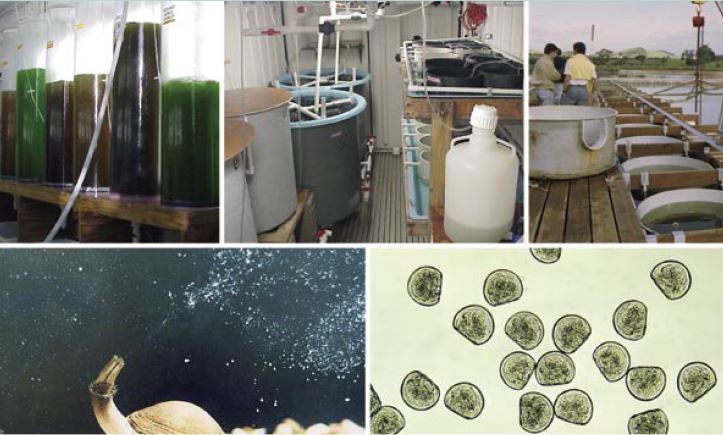Hatchery culture of bivalves
Hatchery culture of bivalves A practical manual

Prepared by
Michael M. Helm
FAO Consultant
Nova Scotia, Canada
and
Neil Bourne
FAO Consultant
British Columbia, Canada
Compiled and edited by
Alessandro Lovatelli
Inland Water Resources and Aquaculture Department
FAO Fisheries Department
Rome, Italy
FOOD AND AGRICULTURE ORGANIZATION OF THE UNITED NATIONS Rome, 2004
FAO
FISHERIES TECHNICAL PAPER
471
The designations employed and the presentation of material in this information product do not imply the expression of any opinion whatsoever on the part of the Food and Agriculture Organization of the United Nations concerning the legal or development status of any country, territory, city or area or of its authorities, or concerning the delimitation of its frontiers or boundaries.
ISBN 92-5-105224-7
All rights reserved. Reproduction and dissemination of material in this information product for educational or other non-commercial purposes are authorized without any prior written permission from the copyright holders provided the source is fully acknowledged. Reproduction of material in this information product for resale or other commercial purposes is prohibited without written permission of the copyright holders.
Applications for such permission should be addressed to:
Chief
Publishing Management Service
Information Division
FAO
Viale delle Terme di Caracalla, 00100 Rome, Italy
or by e-mail to:
Этот адрес электронной почты защищён от спам-ботов. У вас должен быть включен JavaScript для просмотра.
© FAO 2004
Preparation of this document
This manual is part of the publications programme of the Fisheries Department Inland Water Resources and Aquaculture Service of the Food and Agriculture Organization of the United Nations. It is a synthesis of the current methodologies applicable to the intensive hatchery culture of bivalve molluscs covering similarities and differences in approach in rearing clams, oysters and scallops in different climatic regions. All aspects of the culture process are described, together with considerations in choosing a site for hatchery development and in the design of suitable facilities. The manual also includes the post-hatchery handling of “seed” bivalves in land- and sea-based nursery culture preparatory to on-growing. This publication is intended to assist both technicians entering this field as well as investors interested in evaluating the complexity of intensive hatchery production.
The authors bring together a combined 80 years of experience in the biology, management and operation of hatcheries encompassing a range of the more commonly cultured bivalve species in different parts of the world. Preparation of the manual has been under the overall coordination of Alessandro Lovatelli, Fishery Resources Officer (Aquaculture).
The authors wish to acknowledge the contributions of their many colleagues past and present and industry leaders, without which this publication would not have been possible.
Unless otherwise acknowledged, all photographs were taken by the authors.
Distribution:
Directors of Fisheries
FAO Fisheries Department
FAO Fisheries Officers in FAO Regional and Subregional Offices FI Marine Aquaculture Mailing List